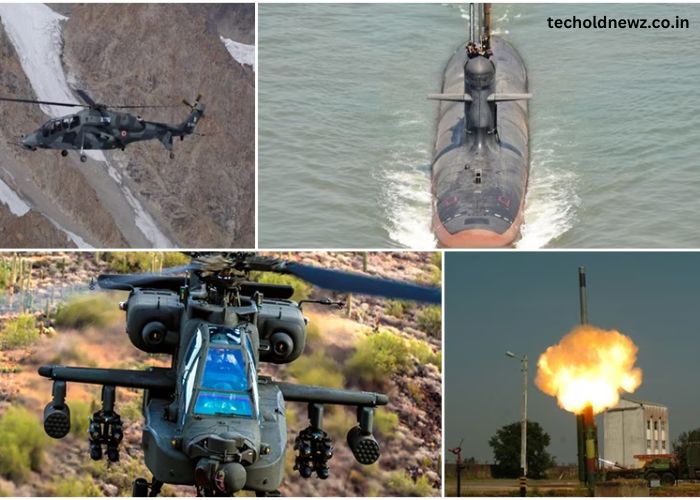India has one of the largest and most diverse defence systems in the world. With constant advancements, reforms, and modernisation, India’s defence sector is not just safeguarding its borders but also asserting its influence on global platforms. From new military agreements to cutting-edge technology, there is always something new happening in the defence sector.
In this blog, we’ll explore the latest updates, challenges, and strategies that define India’s defence news.
Key Points:
- India ranks among the top five global military spenders.
- Recent focus has been on indigenisation and self-reliance.
- Collaboration with global powers is shaping India’s defence policies.
What Are The Latest Developments In India’s Defence Sector?
India has recently made several advancements in the defence sector. The induction of modern weaponry, agreements with allies, and strengthening of cybersecurity are at the forefront. For example, India has acquired advanced fighter jets like the Rafale and initiated the ‘Make in India’ campaign in the defence manufacturing sector.
Table: Key Recent Developments in India’s Defence Sector
| Development | Details |
|---|---|
| Rafale Jets | Induction of 36 advanced fighter jets |
| Indigenous Aircraft Carrier | INS Vikrant, fully developed in India |
| Defence Exports | Focus on exporting equipment to ASEAN & African nations |
| Cybersecurity Enhancements | New AI-based defence systems |
This trend reflects India’s intention to be self-reliant in defence and contribute more significantly to the global arms trade.
Note: Defence technology is advancing rapidly; staying updated is crucial to understanding strategic shifts.
How Is India Strengthening Its Border Security?
Border security remains a critical aspect of India’s defence policy. With multiple terrains and diverse threats, India has prioritized modernizing its infrastructure and security protocols.
Steps Taken:
- Deployment of advanced surveillance drones like Heron.
- Upgrading border fencing with smart sensors.
- Strategic partnerships with neighboring countries like Bhutan and Nepal to counter threats.
India’s armed forces are also focusing on infrastructure development in sensitive regions, such as Ladakh and Arunachal Pradesh. For instance, building all-weather roads and advanced airfields has boosted operational capabilities along the Line of Actual Control (LAC) with China.
Comparison Chart: Conventional vs. Modern Border Security Measures
| Feature | Conventional Security | Modern Security Measures |
| Surveillance | Manual Patrolling | AI-powered Drones |
| Communication | Radio-Based | Satellite Networks |
| Infrastructure | Basic Roads | All-Weather Connectivity |
Reminder: Border security ensures not just national safety but also economic stability.
Why Is ‘Make In India’ Significant For Defence?
‘Make in India’ is a flagship program aimed at reducing dependence on imports and boosting indigenous production. This initiative has led to collaborations with private companies and foreign investors to develop advanced military equipment.
Achievements:
- Production of Tejas, a light combat aircraft.
- Development of indigenous missiles like Agni and BrahMos.
- Increased defence exports to countries like Myanmar and Sri Lanka.
This shift not only strengthens India’s economy but also ensures technological independence. Moreover, small and medium enterprises (SMEs) are contributing significantly by manufacturing components for larger defence systems.
What Role Do Global Alliances Play In India’s Defence Strategy?
India’s alliances with countries like the USA, Israel, and Russia have been instrumental in modernising its military. For example, the USA’s defense pact has provided India with access to cutting-edge technologies like drones and cybersecurity tools. Similarly, Israel’s expertise in missile systems has enhanced India’s defence capabilities.
India’s participation in international groups like QUAD (Quadrilateral Security Dialogue) also ensures that it remains a vital player in Indo-Pacific security. These collaborations improve not just equipment but also training, intelligence sharing, and strategic planning.
What Challenges Does India’s Defence Sector Face?
Despite its achievements, India’s defence sector faces challenges that need immediate attention.
Major Challenges:
- Budget Constraints: A significant portion of the budget goes to salaries and pensions, leaving less for modernisation.
- Dependence on Imports: Although ‘Make in India’ has made progress, a large percentage of equipment is still imported.
- Technological Gaps: Lack of homegrown technologies in AI and advanced weaponry is a concern.
Example: While India’s cybersecurity measures are improving, the rapidly evolving nature of cyber threats demands constant upgrades, which are resource-intensive.
Conclusion: The Road Ahead For India’s Defence
India’s defence sector is at a transformative stage, driven by modernisation, global collaborations, and indigenous production. However, to achieve its goals, it must address challenges like budgetary constraints and technological gaps.
As India continues to grow as a global power, its defence strategies will play a pivotal role in securing the nation and contributing to international peace.
FAQs
- What Are The Latest Defence Deals Signed By India? India has signed defence deals with countries like the USA and France, focusing on acquiring drones, fighter jets, and submarines.
- How Does ‘Make in India’ Impact Defence Manufacturing? ‘Make in India’ aims to reduce imports, boost local production, and promote self-reliance in defence technology.
- Which Countries Are India’s Major Defence Partners? The USA, Russia, Israel, and France are key partners, providing advanced technology and military equipment.
- What Is India’s Role In Global Defence Forums? India actively participates in forums like QUAD and BRICS to promote regional and global security.
- What Are India’s Future Defence Plans? India plans to focus on artificial intelligence, cybersecurity, and expanding indigenous production to achieve technological independence.


